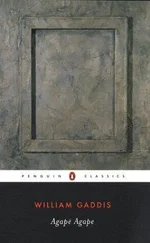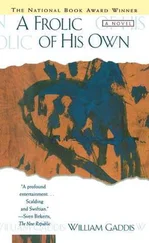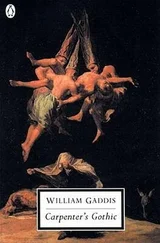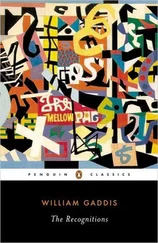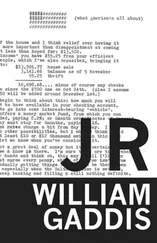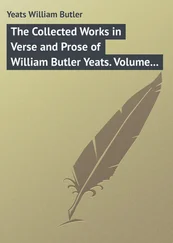On the Road . A few months later he returned to New York for “grand and often wild times” amid “the drug ambience” of Greenwich Village (as he recalled in one of the last letters he wrote), falling in love with an enigmatic junkie/artist/
Vogue model named Sheri Martinelli, until he hopped a plane for Panama City, where he worked on the canal locks for a few months and then left for next-door Costa Rica and participated in its brief 1948 revolution before returning to New York on a Honduran banana boat. He wasn’t there five months before he shipped out to Spain, where he lived on and off for the next two and a half years: staying a week in a monastery, trying out Paris for a year (avoiding the other expats on the Left Bank, whom he found pretentious), engaging himself to a fellow American named Margaret Williams, vacationing in Italy, spending a Christmas in England, visiting Robert Graves on the island of Majorca, and working on a film in North Africa before returning to the States in 1951 at the age of twenty-eight.
All that time, from Mexico in 1947 onward, Gaddis worked on what would become The Recognitions , and continued working on it until he finished it in 1954. Its publication the following year marks a low point in American book reviewing, for it was almost universally panned, sending Gaddis to look for freelance work and soon begin a five-year stint as a writer for Pfizer Pharmaceuticals to support himself and his new family. (He had married Pat Black in 1955, and they had two children: Sarah in September 1955, Matthew in January 1958.) He returned to freelance work in 1962—and would continue to take on projects until the late ’70s — and continued to travel widely in later years: to Germany in 1964 to work with the U.S. Army on a film about the Battle of the Bulge, through the Far East (Thailand, the Philippines, Japan) in 1976 on a speaking tour for the U.S. Information Agency, vacations in Haiti (1979) and Greece (1980), Italy in 1984, Russia in 1985 with a delegation of American writers (including his friend William H. Gass, who published an account of the trip), Australia, New Zealand, England, and Bulgaria for book promotions and conferences in 1986, and back a few times in the late 1980s and 1990s to Germany, where he was greeted with movie-star adulation unthinkable in his homeland. He even appeared in a blaxploitation vampire film with his second wife, Judith Thompson ( Ganja and Hess , 1973).
The chief value of these letters is not their documentation of a colorful life but their revelation of how chaotic the composition of Gaddis’s novels were. The published works have such an aura of Olympian confidence and authority that it is startling to learn how hard Gaddis struggled to produce these novels. His vision for each of them was often clouded by self-doubts and periods of exasperated indecision, not to mention the distractions of financial hardship and the more enjoyable commitments to his family and friends. During the writing of The Recognitions , as these letters reveal, Gaddis moodswings between such excitement for his novel that he can barely get the words down (see the spring 1948 letter to Charles Socarides) and such disgust that he sounds like his worst reviewer. The composition of J R stretched over twenty years, interrupted by countless claims on his attention until he reached the point when he told his son Matthew that the most satisfying thing about finishing it was that he would “NEVER HAVE TO READ THE INFERNAL BOOK AGAIN!” After it came out in 1975, Gaddis never wanted to write another novel; and when he realized he had to for financial reasons, it took him four years to come up with the idea for Carpenter’s Gothic , and even then he had to struggle to find some aspect of it to challenge him. In several letters to legal advisors in the late 1980s while writing A Frolic of His Own , Gaddis confesses he’s over his head in legal complications and doesn’t know how to get out of the mess he’s created. After its triumphant appearance in 1994, winning Gaddis a second National Book Award (after J R ), he cast about for something new to write about, and in 1996 decided to resurrect a book he had begun fifty years earlier, Agap ē Agape: The Secret History of the Player Piano , and struggled with that for a year or so (just as Jack Gibbs struggled with the same work decades earlier in J R ) before deciding to convert it to a novel, finishing it just before he died on 16 December 1998, two weeks before what would have been his seventy-sixth birthday.
It’s interesting to see that most of Gaddis’s characteristic elements of style were in place at an early age: a rather formal tone — it’s difficult to believe a nineteen-year-old wrote the letter of 26 January 1942—a preference for British spellings, a fondness for literary allusions (especially to Eliot: he seems to have memorized Four Quartets ), and the use of the European dash to indicate dialogue — not an avant-garde affectation, as some reviewers charged, but simply what Gaddis grew used to seeing in Spanish and French books while in Central America and Europe. In later letters there are long, tortuous, punctuation-free sentences that rival those in his novels, punched up with active verbs, colorful imagery, sardonic wit, and (toward the end) some touching whimsy and nostalgia. Though not written for publication, these letters offer many of the same linguistic delights as his published works.
His literary tastes and aesthetics were also in place from an early age: his lifelong love for the great Russian novelists of the nineteenth century, for T. S. Eliot and Evelyn Waugh, for parody and burlesque (nurtured by the Lampoon ), and his conviction that, once written, a work must stand on its own. In a 1949 letter to his mother Edith — who is the heroine of the first half of this book: his confidante, research assistant, financial benefactor, his everything — Gaddis says of one of his short stories: “Yes, it is supposed to end as you quote it — heaven knows if it should or not — but I can’t tell now, it is none of my concern now the thing is written I am through with it.” He would reiterate that point to every critic who approached him in later years.
Gaddis had mixed feelings about writing letters, often considering them an annoying distraction and putting off responding to incoming mail for months — or years, in the almost comical case of David Markson. (In later years, a good percentage of his letters begin with an apology for not writing sooner.) “Correspondence a good thing,” he conceded to his mother in January 1948, “though even it often seems a waste to me,” going on to rail against “the vanity of letter-writing” a few months later in a remarkable letter to Katherine Anne Porter (7 April 1948). In a 1967 letter to his future second wife, he counters Judith’s claim that she “can’t bear this letter writing business because mine are so marvelous” by insisting “they’re not, no, and I almost think it would be terrible if we became adept, exchanged sparkling & accomplished correspondence, things mustn’t get to that point! No, our letters have to stay awkward & just blundering around […].” On the other hand, as he indicates in one to his friend Saul Steinberg, he sometimes welcomed the opportunity to write a letter in order to clarify his thoughts by setting them down on paper. And he certainly enjoyed writing to his children, as the brief selection included here should indicate. He took care over his letters: he would often write and correct a draft before sending one — no shoddy goods left his workshop — and favored friends received beautifully handwritten letters that are superb examples of calligraphy (see p. 269). In many cases, his letters contain “Material, one might say, for a novel,” as he quipped to his mother (28 November 1950): some of his early letters contain passages that went straight into The Recognitions , and in later letters there are many situations and sentiments that would be reworked in his novels. Watching how he transformed experience into art, recognizing the base materials that he alchemized into gold, may be the most rewarding aspect of this collection.
Читать дальше


